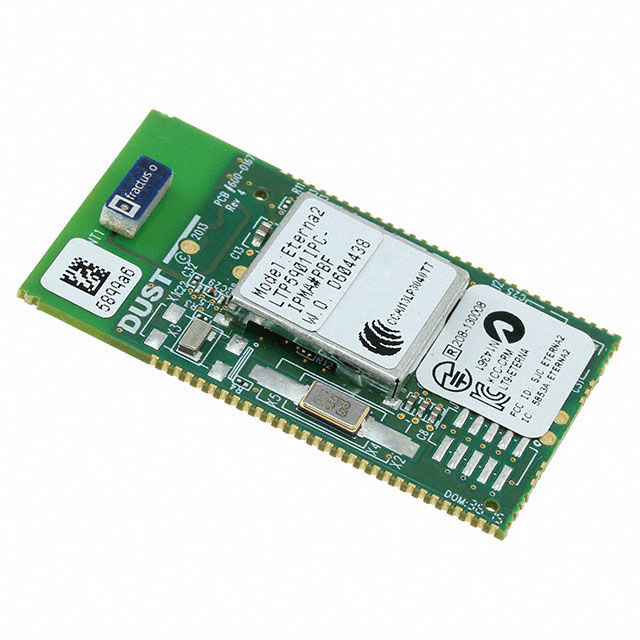How Do Thermal Imaging Cameras See the Unseen and Shape the Future of Inspection?
- joddiemarshall6
- May 2
- 4 min read
Thermal imaging cameras are transforming the way we perceive and measure the world around us. They do something extraordinary—convert invisible heat into visible light. By detecting infrared radiation emitted by all objects, these cameras reveal thermal differences and allow users to see variations in surface temperatures, even in complete darkness or behind obstructions. This ability makes them indispensable in areas where visual inspection fails.
From industrial troubleshooting and home energy audits to search-and-rescue missions and wildlife monitoring, thermal imaging has grown far beyond its original military roots. But how exactly do they work, and why are they more relevant than ever in modern applications?
What Technology Powers Thermal Imaging Cameras?
Thermal Imaging cameras are equipped with sensors that detect infrared wavelengths, which sit just beyond the visible spectrum. Every object, regardless of temperature, emits some level of infrared energy. A thermal camera collects this radiation and converts it into electrical signals that are then processed into an image.
The resulting image is often a gradient map of colours, each representing different temperature levels. Warmer areas appear brighter, while cooler regions display darker shades. Unlike night vision devices that amplify available light, thermal cameras require no light at all to function.
Why Are Thermal Imaging Cameras Crucial for Preventive Maintenance?
Predictive maintenance is a vital part of industrial and commercial systems. Mechanical equipment, electrical panels, and HVAC systems often show signs of wear in the form of excessive heat before they actually fail. This is where thermal imaging steps in.
With a single scan, technicians can:
Identify overheating motors or electrical connections
Detect failing bearings or friction-related heat buildup
Monitor transformers and circuit breakers
Find hidden fluid or air leaks in pipelines
By addressing these issues early, businesses avoid downtime, reduce repair costs, and extend equipment life.
Where Do Thermal Cameras Offer a Competitive Edge?
Thermal imaging cameras serve a wide range of industries due to their versatility and efficiency. They enable professionals to make faster and more accurate decisions in dynamic environments.
Common sectors that benefit include:
Construction: Locating missing insulation or air leakage
Automotive: Identifying misfiring cylinders or brake heat imbalance
Emergency Services: Detecting trapped individuals through smoke or darkness
Electrical: Pinpointing loose connections or circuit overloads
Agriculture: Assessing crop health and detecting pest activity
Medical: Evaluating circulation, inflammation, and infection zones
Their non-contact nature ensures safety and efficiency during critical assessments.
What Are the Most Notable Types of Thermal Imaging Cameras?
Not all thermal cameras are built the same. Depending on their design and function, different models cater to specific use cases and environments.
Some of the key types include:
Compact handheld models ideal for electricians and engineers
Thermal-enabled smartphones or clip-on modules for mobile diagnostics
Fixed thermal systems used in continuous monitoring setups
Aerial-mounted thermal cameras for drones used in agriculture or surveying
Weapon-mounted scopes for law enforcement or defence tasks
Each type offers tailored advantages in terms of portability, field of view, temperature sensitivity, and software features.
What Factors Should You Evaluate Before Choosing a Thermal Camera?
With many options available, selecting the right thermal camera can feel overwhelming. The most important step is to align your requirements with the technical capabilities of the camera.
Consider the following:
Thermal resolution: Higher pixel counts yield sharper, more detailed thermal images
Temperature range: Broader detection ranges allow use in extreme conditions
Field of view: A wider lens captures more area in a single frame
Frame rate: Faster frame rates improve the scanning of moving objects
Storage options: Built-in memory or SD card support simplifies documentation
Software support: Image analysis and reporting tools enhance usability
Choosing a model that meets your environment and use case ensures long-term value and effectiveness.
How Are Thermal Imaging Cameras Used in Today’s Smart Systems?
With the evolution of AI, IoT, and machine learning, thermal imaging technology is becoming smarter and more integrated into automated systems. Today’s cameras are not just imaging tools—they are intelligent sensors that enable data-driven decisions.
Current innovations include:
Real-time AI-based thermal anomaly detection
Cloud-connected platforms for remote monitoring and alert systems
API integrations for industrial automation networks
Enhanced edge-processing capabilities for real-time analytics
Wireless streaming of thermal feeds to mobile devices and cloud dashboards
This fusion of infrared imaging with modern software architecture is expanding the role of thermal cameras in smart infrastructure and Industry 4.0 environments.
What Makes Thermal Imaging an Eco-Friendly and Safe Choice?
Thermal imaging stands out as a green and non-invasive technology. It does not emit any harmful radiation, nor does it require any physical interaction with the object being scanned. This allows professionals to carry out inspections safely and repeatedly without damaging equipment or disrupting operations.
Advantages from an environmental and safety perspective:
Reduces unnecessary energy usage by detecting heat loss
Supports safer inspections of high-voltage systems
Enables routine diagnostics without shutdowns
Prevents catastrophic failures by early fault detection
Requires no consumables or harmful agents
This combination of safety, sustainability, and efficiency makes thermal imaging a future-ready tool for diverse fields.
How Are Thermal Imaging Cameras Shaping the Future?
As innovation continues, the role of thermal imaging will expand into new domains such as smart cities, autonomous vehicles, and personal health monitoring. Future devices may be more compact, AI-enhanced, and accessible to consumers and professionals alike.
Emerging trends include:
Wearable thermal sensors for real-time body temperature monitoring
AI-assisted building audits with drone-based thermal scans
Integration into security systems with automated alerts
Enhanced resolution approaching that of optical cameras
Mass-market affordability bringing thermal to everyday users
Thermal imaging has already crossed a threshold from specialised equipment to essential everyday tools. As technology advances, its value and impact will only grow stronger.



Comments